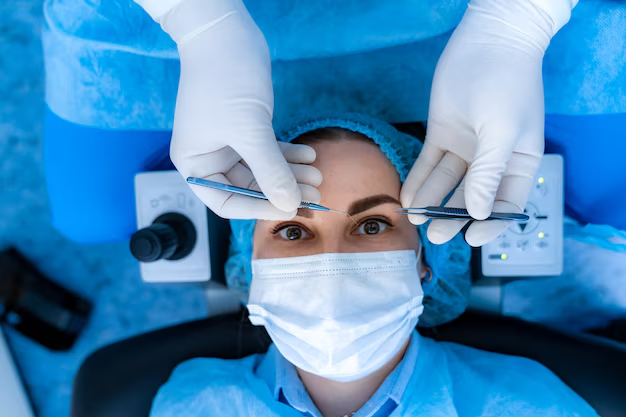Understanding Cataracts and Clarifying if You Can Develop Them Twice
Imagine waking up to a world that looks foggy or blurred, dimming the vibrancy of colors and sharpness of objects. This is what many individuals with cataracts experience. Cataracts are a common eye condition, particularly among older adults, that can significantly impede vision quality. But once you've addressed cataracts—typically through surgical intervention—can they return? Let’s explore this intriguing question and provide clear answers to this prevalent concern.
What Are Cataracts?
Cataracts occur when the lens of the eye becomes cloudy, impairing vision. The lens, normally clear, helps to focus light or an image on the retina—the light-sensitive layer of tissue at the back of your eye. In an eye with a cataract, the light is scattered as it passes through the lens, causing blurred or distorted vision.
Causes & Risk Factors
Cataracts develop for various reasons, including aging, genetic factors, eye injuries, or exposure to certain chemicals. Some common risk factors include:
- Age: Individuals over the age of 60 are more likely to develop cataracts.
- Diabetes: People with diabetes are at increased risk.
- Previous eye surgery or injury: These can prompt the early development of cataracts.
- Prolonged use of corticosteroid medications: Can hasten cataract formation.
Symptoms to Recognize
Recognizing cataract symptoms can lead to earlier diagnosis and treatment. Some common symptoms include:
- Blurry or cloudy vision
- Difficulty reading or seeing in low light
- Fading or yellowing of colors
- Sensitivity to light or glare
- Seeing "halos" around lights
Can You Develop Cataracts More Than Once?
In the traditional sense, once a cataract is removed, it cannot “grow back.” However, there’s more to the story. After cataract surgery, some patients may experience something called posterior capsule opacification (PCO). Let's delve deeper into this condition.
Explaining Posterior Capsule Opacification (PCO)
PCO is sometimes referred to as a "secondary cataract" but it's crucial to understand that it isn't a true cataract. After the cataract surgery, the natural lens is replaced with an artificial intraocular lens. However, months or years after this procedure, the back of the capsule that holds the lens can become cloudy, affecting vision similarly to the original cataract.
Symptoms of PCO
- Cloudy or blurry vision
- Glare and halos around lights
- Difficulty with night vision
Treating PCO
The treatment for PCO is straightforward and involves a procedure known as YAG laser capsulotomy. It is non-invasive and typically performed in an outpatient setting:
- Quick Procedure: Usually takes a few minutes with immediate visual recovery.
- Pain-Free: Most patients experience little to no discomfort during the procedure.
- Effective: Clears the vision immediately and pervasively.
Advances in Cataract Surgery
Understanding how cataract surgery has evolved can provide comfort and assurance to those undergoing the procedure.
Types of Cataract Surgery
- Phacoemulsification: The most common method, using ultrasound vibrations to break up the lens for removal.
- Extracapsular surgery: Less common, involves removing the lens in one piece and typically requires a larger incision.
The Role of Intraocular Lenses (IOLs)
Post-surgery, artificial lenses are inserted to restore clear vision. There are various types of IOLs available, offering different benefits:
- Monofocal lenses: Provide clear vision at one distance.
- Multifocal lenses: Allow for both near and far vision.
- Toric lenses: Address astigmatism, enhancing vision quality.
- Accommodative lenses: Designed to shift within the eye, catering to dynamic focusing.
Benefits of Modern Cataract Surgery
- Minimal Recovery Time: Most people resume normal activities swiftly.
- Increased Precision: Technological advances allow for tailored surgeries meeting individual needs.
- Safety: Cataract surgery is one of the safest and most frequently performed surgeries worldwide.
Preventive Insights and Maintenance for Eye Health
Cataracts are often influenced by factors that can be managed with lifestyle changes and regular monitoring.
Preventive Measures
- Nutrition: Diets rich in antioxidants (like vitamins C and E) can support eye health.
- Sun Protection: Wearing sunglasses that block UV rays can protect your eyes.
- Regular Eye Exams: Early detection can prevent progression and mitigate complications.
Lifestyle Tips for Eye Health
- Manage Diabetes: Controlling blood sugar levels can reduce risk.
- Quit Smoking: Smoking cessation lowers the risk of cataracts and other eye conditions.
- Limit Alcohol: Excessive alcohol use is linked to increased cataract risk.
Summary Table: Key Takeaways from Cataracts Exploration
| 👀 Aspect | 📝 Details |
|---|---|
| Cataracts Return? | No, but PCO might occur post-surgery |
| Treatment | Cataract surgery with potential YAG laser for PCO |
| Risk Management | Regular eye exams, UV protection, healthy lifestyle |
| Surgical Advances | Minimized risks and enhanced precision |
| Eye Health Tips | Antioxidant-rich diet, manage diabetes, no smoking |
Closing Insight
Surgery for cataracts marks a significant improvement in an individual's quality of life by restoring vision clarity. While the concept of a "secondary cataract" might raise concerns, understanding that it doesn’t equate to a recurrence of the original condition helps alleviate worries. With continuous advancements in eye care and medical technology, patients benefit from robust solutions and reliable treatments, allowing them to enjoy a world seen through clearer lenses. Embrace regular check-ups and cultivate a lifestyle that nurtures your vision health, staying informed and proactive in your care journey.
